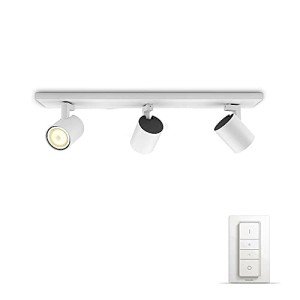Quiz: How Much Do You Know About Contemporary Lighting UK?
Contemporary Lighting in the UK: Transforming Spaces with Illumination
Lighting plays a crucial role in defining the atmosphere and functionality of any area. In the UK, contemporary lighting has emerged as a substantial design aspect, providing ingenious options that mix visual appeals with practicality. This post delves into the various styles, materials, and innovations forming contemporary lighting, along with tips for choosing the most suitable fixtures for numerous settings.
The Evolution of Contemporary Lighting
Contemporary lighting in the UK reflects the altering tastes and technological developments in style. It encapsulates a large selection of styles, consisting of:
Minimalist: Characterized by simpleness and tidy lines, minimalist lighting fixtures concentrate on form and function without unnecessary decorations.
Industrial: Inspired by city settings, industrial lighting integrates basic materials like metals and woods with strong styles, producing edgy, practical pieces.
Scandinavian: Known for its warmth and simplicity, Scandinavian lighting often features soft colors and natural materials, focusing on producing a relaxing atmosphere.
Smart Lighting: This modern trend integrates innovation with design, allowing users to manage their lighting with mobile apps, voice commands, or automation systems.
To illustrate the development and variety in the field of contemporary lighting, consider the table listed below, which highlights key attributes of various designs.
Style
Key Characteristics
Popular Materials
Suitable Spaces
Minimalist
Basic, functional styles
Metal, glass, wood
Modern homes, workplaces
Industrial
Raw, incomplete appearance
Steel, concrete, wood
Lofts, galleries
Scandinavian
Cozy, warm visual appeals
Natural fibers, light wood
Living rooms, cafes
Smart
Integrated innovation, automation
Differs widely
Residences, workplaces, retail spaces
Choosing Contemporary Lighting Fixtures
Choosing the right lighting fixtures for an area needs careful consideration of numerous elements. Here are crucial elements to keep in mind:
1. Purpose of the Space
Before selecting fixtures, think about the intended usage of the location. Various functions need various types of lighting:
- Task Lighting: Focused illumination for activities such as reading, cooking, or studying. Examples include table lamps and under-cabinet lights.
- Ambient Lighting: General lighting that provides general lighting. Ceiling lights and pendant fixtures fall under this classification.
- Accent Lighting: Designed to highlight particular functions or locations, such as artwork or architectural details. Wall sconces and mounted lights prevail choices.
2. Style and Theme
The lighting should match the existing decoration. Decide for fixtures that match or improve the general style of the area, whether it's contemporary, rustic, or eclectic.
3. Size and Scale
Consider the proportion of the lighting fixtures relative to the area. Buy Bathroom Lighting UK may look sensational above a spacious dining table, while smaller pendant lights work well in compact settings.
4. Energy Efficiency
With rising energy expenses and environmental concerns, choosing energy-efficient lighting alternatives is vital. LED lights are an outstanding choice, providing longevity and lower energy consumption.
5. Flexibility
In modern style, versatility is key. Fixtures that can be adjusted or rearranged improve functionality, enabling users to produce various atmospheres as needed.
Popular Contemporary Lighting Brands in the UK
The contemporary lighting market in the UK boasts many brand names understood for their ingenious designs and quality workmanship. Some significant points out include:
- FLOS: An Italian brand commemorated for its artistic and renowned lights that frequently double as pieces of art.
- Tom Dixon: A British designer recognized for his modern, industrial designs that wonderfully integrate metal and light.
- Anglepoise: Known for its flexible, functional lamps, best for a range of settings from home offices to creative studios.
- John Lewis: Offers a variety of contemporary lighting services that accommodate a broader audience, including affordable yet elegant options.
Frequently Asked Questions about Contemporary Lighting in the UK
1. What is contemporary lighting?
Contemporary lighting describes lighting styles and fixtures that show existing design trends, often identified by clean lines, innovative shapes, and making use of modern materials and innovations.
2. How do I choose the best lighting for my home?
Think about the purpose of the room, existing design, size of fixtures, energy effectiveness, and versatility. Examine how each piece will contribute to the total ambiance and functionality of your space.
3. What are some energy-efficient lighting choices readily available in the UK?
LED lights are the most prominent energy-efficient option, understood for their long lifespan and low energy intake. Compact fluorescent lights (CFLs) and halogen bulbs are other alternatives.
4. Where can I purchase contemporary lighting in the UK?
Contemporary lighting can be discovered in different retail outlets, both online and in physical stores. Significant merchants consist of John Lewis, Habitat, and specialized lighting stores.
5. Can contemporary lighting work in traditional spaces?
Definitely! Contemporary lighting can improve traditional areas when selected thoughtfully. Choosing fixtures with a balance in between modern and timeless components can create an unified style.
Contemporary lighting in the UK represents more than simply illumination; it embodies style development and creativity, changing spaces and enhancing functionality. As patterns continue to develop, house owners and designers alike can explore an expansive series of styles and innovations, making sure that every room bursts with life, warmth, and character. By thinking about the essential elements detailed in this short article, one can curate a collection of lighting fixtures that resonates with individual design and satisfies useful needs, ultimately forming comfy and visually appealing environments.
